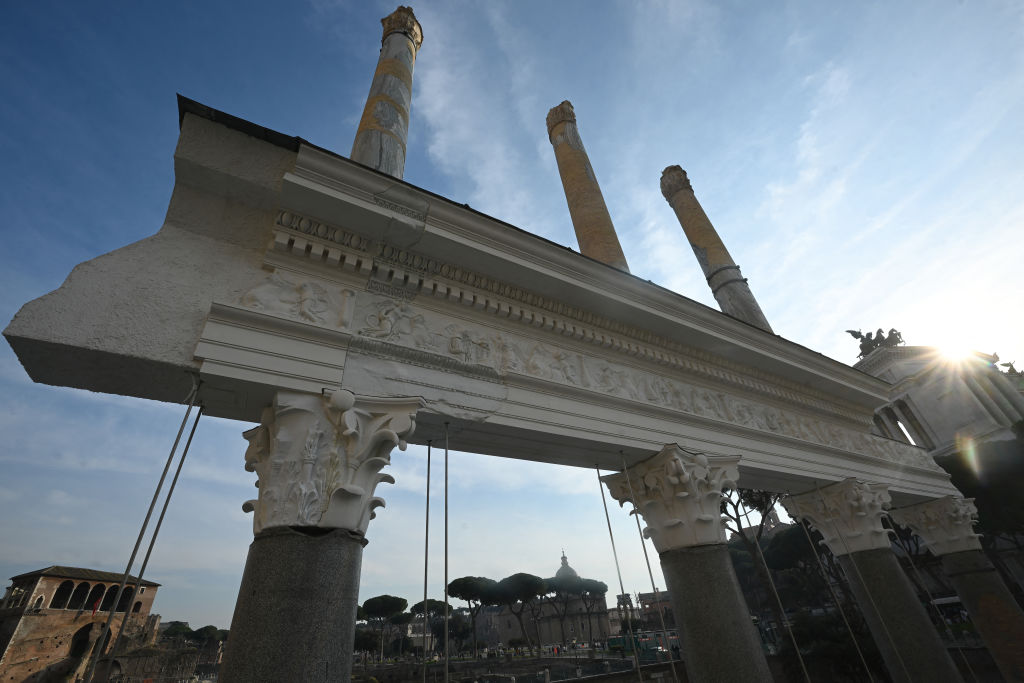A towering section of the storied Basilica Ulpia in Rome has been rebuilt, sparking mixed reactions from historians and causing others to question whether the project’s funding was appropriate.
The structure stands more than 75 feet tall and was funded by a €1.5 million ($1.6 million) donation from Alisher Usmanov, a powerful Russian figure with close ties to Putin that the Official Journal of the European Union referred to Usmanov as “one of Vladimir Putin’s favorite oligarchs” in 2022.
The newspaper La Repubblica called the project’s ties to Usmanov “embarrassing” and claimed the Basilica’s unveiling, which occurred shortly before Christmas last year, was deliberately kept under the radar.
But beyond the controversy, the reconstruction itself is sparking debate. Some, like art historian Bruno Zanardi, who once taught restoration at the University of Bologna, argue that the revamped Basilica deviates from the original design, while others, like Michele Campisi, of the heritage group Italia Nostra, celebrate its ability to bring history to life for everyone.
“Finally, a significant restoration that gives everyone—not just scholars and insiders—an exact idea of history,” Campisi wrote on Facebook. “When one can, one should try to reconstruct [monuments], because this provides a chance to keep these architectural fragments alive.”
The restoration may offer a glimpse into the grandeur of the past, but the ethics of its funding and the accuracy of its representation remain complex questions. According to the Art Newspaper, experts used segments from the original Basilica entablature that have been kept in museums and warehouses as a basis for the reconstruction. The newly redone segment of the frieze was placed on four granite pillars that indicate where the basilica’s first nave once stood.
The new entablature was topped with three green marble pillars that, for almost 100 years, stood unused at the site. The original basilica was fell into ruin during the Middle Ages. Sections were excavated over the course of digs in the 19th and early 20th centuries.
According to Forbes, Usmanov is worth more than $14 billion. The Art Newspaper reports that Usmanov has contributed to multiple Roman restoration projects, including a donation of €300,000 to restore frescoes in the Orazi and Curiazi Hall at the Campidoglio. Both the Unites States and the European Union sanctioned Usmanov following the Russian invasion of Ukraine. In 2020 some 30 paintings worth $5 million that were once stored on Usmanov’s superyacht, Dilbar, were seized by the German government. At the time the ship was being renovated in Hamburg and the art was put in storage.
